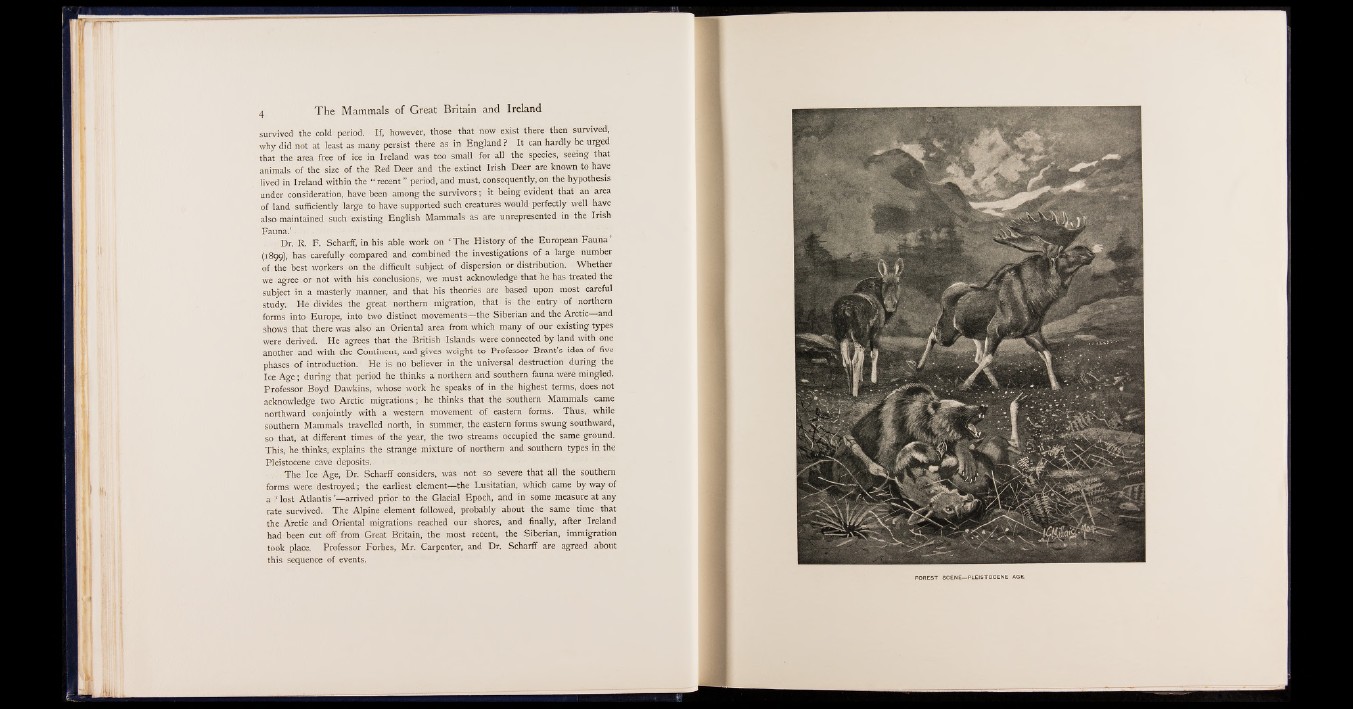
survived the cold period. If, however, those that now exist there then survived,
why did not at least as many persist there as in England ? It can hardly be urged
that the area free of ice in Ireland was too small for all the species, seeing that
animals of the size of the Red Deer and the extinct Irish Deer are known to have
lived in Ireland within the “ recent ” period, and must, consequently, on the hypothesis
under consideration, have been among the survivors; it being evident that an area
of land sufficiently large to have supported such creatures would perfectly well have
also maintained such existing English Mammals as are unrepresented in the Irish
Fauna.’
Dr. R. F. Scharff, in his able work on ‘ The History of the European Fauna’
(1899), has carefully compared and combined the investigations of a large number
of the best workers on the difficult subject of dispersion or distribution. Whether
we agree or not with his conclusions, we must acknowledge that he has treated the
subject in a masterly manner, and that his theories are based upon most careful
study. He divides the great northern migration, that is the entry of northern
forms into Europe, into two distinct movements—the Siberian and the Arctic and
shows that there was also an Oriental area from which many of our existing types
were derived. He agrees that the British Islands were connected by land with one
another and with the Continent, and gives weight to Professor Brant’s idea of five
phases of introduction. He is no believer in the universal destruction during the
Ice A g e ; during that period he thinks a northern and southern fauna were mingled.
Professor Boyd Dawkins, whose work he speaks of in the highest terms, does not
acknowledge two Arctic migrations; he thinks that the southern Mammals came
northward conjointly with a western movement of eastern forms. Thus,, while
southern Mammals travelled north, in summer, the eastern forms swung southward,
so that, at different, times of the year, the two streams occupied the same ground.
This, he thinks, explains the strange mixture of northern and southern types in the
Pleistocene cave deposits.
The Ice Age, Dr. Scharff considers, was not so severe that all the southern
forms were destroyed; the earliest element— the Lusitatian, which came by way of
a ‘ lost Atlantis ’— arrived prior to the Glacial Epoch, and in some measure at any
rate. survived. The Alpine element followed, probably about the same time that
the Arctic and Oriental migrations reached our shores, and finally, after Ireland
had been cut off from Great Britain, the most recent, the Siberian, immigration
took place. Professor Forbes, Mr. Carpenter, and Dr. Scharff are agreed about
this sequence of events.